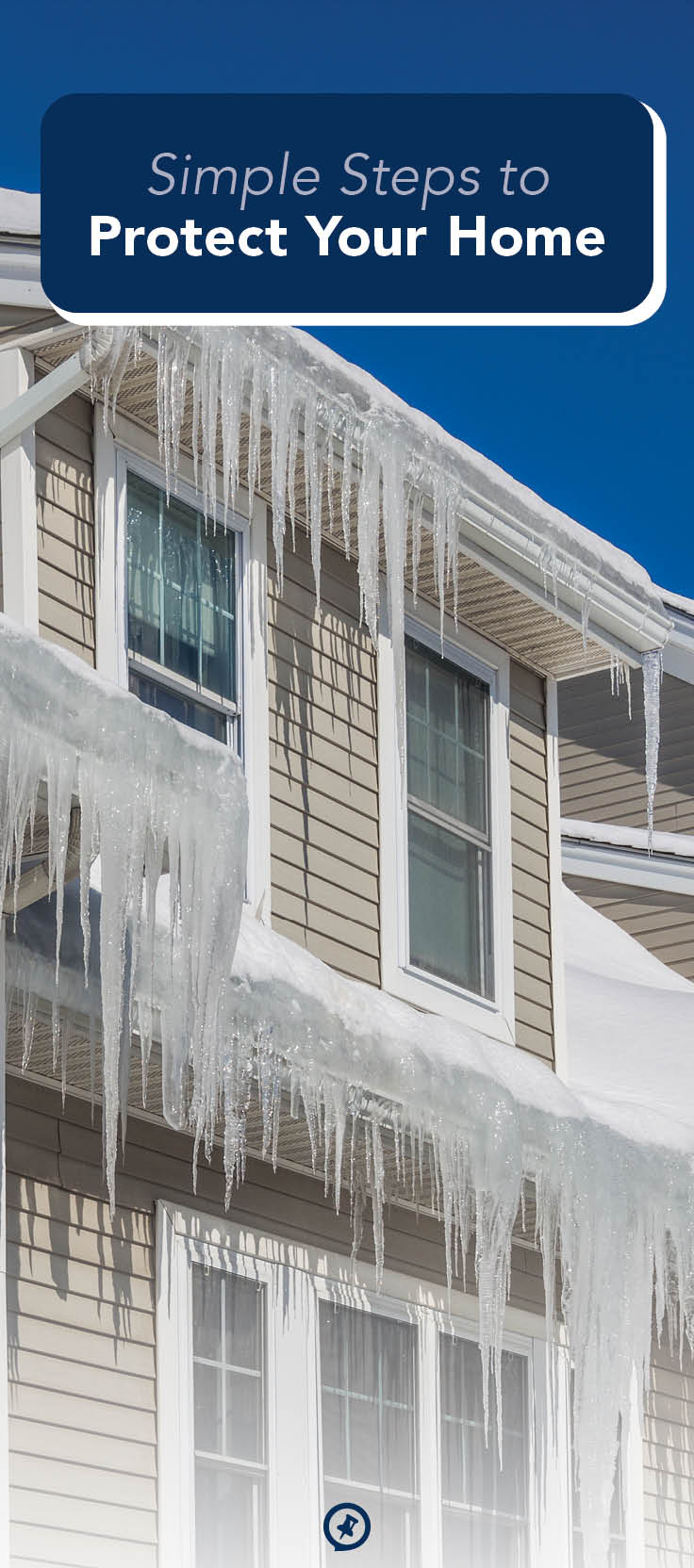Simple Steps to Protect Your Home
With a new year approaching, now is a good time to make a game plan for maintaining your home in both the short term and the long term.
After all, Old Man Winter traditionally causes the most property damage, and he’s just getting crankier. Recent winter storms were some of the costliest in American history: they caused approximately $6 billion in insured losses in 2022 and a record $15 billion in 2021.
So it’s likely not a matter of if but when your home will start showing signs of aging and weather damage. But you can protect it—and give it the gift of extended life—by taking the following steps.

Inside your home
Your home is your castle, a place you can call your personal paradise. It’s where you can retreat to after a long day and where your family feels comfortable and safe. Keep it that way for years to come by making sure each of its vital areas is in tip-top shape.
Doors and windows
These openings keep the outside and inside temperatures where they belong, so you should periodically check that they’re structurally sound, especially around their perimeters. Simply run your hand around their frames to see if you feel air filtering in. If you do, or if you notice any flaking, shrinking, or peeling caulk, fix it as soon as possible. In addition, look for fogging or condensation within a window, which can be a red flag that it needs to be replaced.
Pipes and ducts
Your home’s plumbing is often out of sight, out of mind—until there is a problem. Typically, the biggest culprit is leaks, which can cause extensive water damage and mold buildup. But you can prevent any issues by regularly checking your pipes and faucets for any drips or cracks. Also, turn off and drain outdoor spigots before winter, and consider insulating them with foam to prevent freezing. Finally, don’t forget your dryer ductwork. You or a professional should clean it out at least once or twice a year to eliminate the threat of fire caused by lint buildup.
Basement
If you have an unfinished basement, there are several things you’ll need to check on to keep it in good shape. First and foremost, you should clean your sump pump at least three to four times a year to ensure it’s doing its job: pumping water out of your home. You can test your pump by slowly pouring a bucket of water into it; it should kick in if it’s working properly. Also, if you have French drains in your basement, periodically declutter them to prevent water blockages.
In addition, monitor your basement walls and window wells for evidence of water seeping in, which can result in brown or black mold. If you spot either, get it tested and remediated as soon as possible—for both your home’s safety and your family’s safety.
HVAC
Your HVAC system keeps the air and heat circulating through your home, so a faulty unit can obviously be problematic for your family. It can also be pricey—total HVAC replacements can cost upward of $10,000 or more. Taking steps to maintain your current one will help you avoid this financial burden down the road. To maximize its overall efficiency, change its filters every one to two months, make sure there’s ample space around your inside unit, and frequently check that debris hasn’t fallen onto or into your outside unit. Also, have a professional do a tune-up once or twice a year.

Outside your home
The exterior of your home is its year-round defense, specifically designed to protect your dwelling from the elements—but that doesn’t mean will it last forever. To help shelter the place that provides you shelter every single day, give some attention to the following areas.
Roof
Your roof prevents precipitation like rain and snow from falling into your home, so maintaining it should be of utmost importance. Depending on the materials and craftsmanship, a roof should last at least fifteen to thirty years, but some roofs can last fifty years or more—and you can help increase that longevity. Weather permitting, get onto your roof at least twice a year to clean off any debris and inspect it for loose or damaged shingles or flashing that needs replacing. In winter, do a visual inspection from your yard to avoid an icy rooftop, and, if need be, carefully remove accumulated snow with a roof rake.
Gutters
In some respects, a roof is only as good as the gutters it’s connected to; without properly working gutters, water can stream into your siding and foundation with disastrous results. This is especially true in cold climates: since ice weighs a whopping fifty-seven pounds per cubic foot, it can put an enormous amount of strain on these structures. Prevention is key. Frequently remove any debris from your gutters (especially during fall and early winter) to make sure water can flow out of them, reattach sections that are getting loose, and make sure any accompanying downspouts aren’t blocked.
Siding and foundation
When it comes to a home’s exterior, the roof is usually the star of the show. But that doesn’t mean you should ignore your siding and foundation. If you inspect your siding frequently for cracks, chips, peeling paint, and loose sections, you can make repairs right away and better protect your home. Pay particular attention to window frames and other edges to make sure the siding is flush with its respective trim; if it’s not, reapply exterior caulk. And once a year, clean your siding to remove dirt and mold, which could creep inside the siding itself and into your home.
When it comes to protecting your home, one of the simplest things you can do is also the most important: walk around its exterior to inspect your foundation, taking note of any cracks. Vertical ones tend to be somewhat standard as a result of the structure settling, and you can usually seal them yourself. However, stair-step and horizontal cracks may indicate that there’s a serious foundation issue, so consult with a foundation professional as soon as possible if you find any.
Odds are your home will be the biggest investment you make in your life, so you’ll want to take steps to keep it safe and sound for the long haul. With a little forethought, especially before winter, you can go a long way toward accomplishing that goal.































